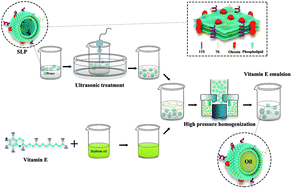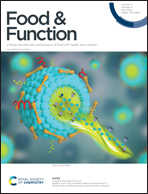Stability and in vitro simulated release characteristics of ultrasonically modified soybean lipophilic protein emulsion
Abstract
Natural emulsifiers such as soybean lipophilic protein (SLP) show potential as delivery systems for hydrophobic bioactive components such as vitamin E; however, the solubility of SLP is limited by its high lipid content. This study evaluated the effects of various ultrasonic conditions on the structure and properties of SLP. Using an emulsion of modified SLP, the carrier properties and in vitro digestion and release properties for vitamin E were evaluated. Biochemical and spectroscopic analyses indicated that the ultrasonic treatment mainly changed the secondary and tertiary structures of SLP. Furthermore, appropriate ultrasonic conditions significantly improved the solubility and emulsifying properties of SLP, with the highest emulsion stability and SLP encapsulation efficiency obtained using an ultrasonic power of 240 W for 20 min. An in vitro digestion simulation revealed that the emulsion prepared by ultrasonic modification of SLP was an effective delivery system for vitamin E. In particular, the emulsion protected the biological activity of vitamin E while significantly increasing the rate of lipid digestion and the bioavailability of vitamin E. These results indicate that the ultrasonically modified SLP can be used to prepare a stable emulsion for encapsulating vitamin E, which provides a new approach for the delivery of hydrophobic bioactive components.



 Please wait while we load your content...
Please wait while we load your content...